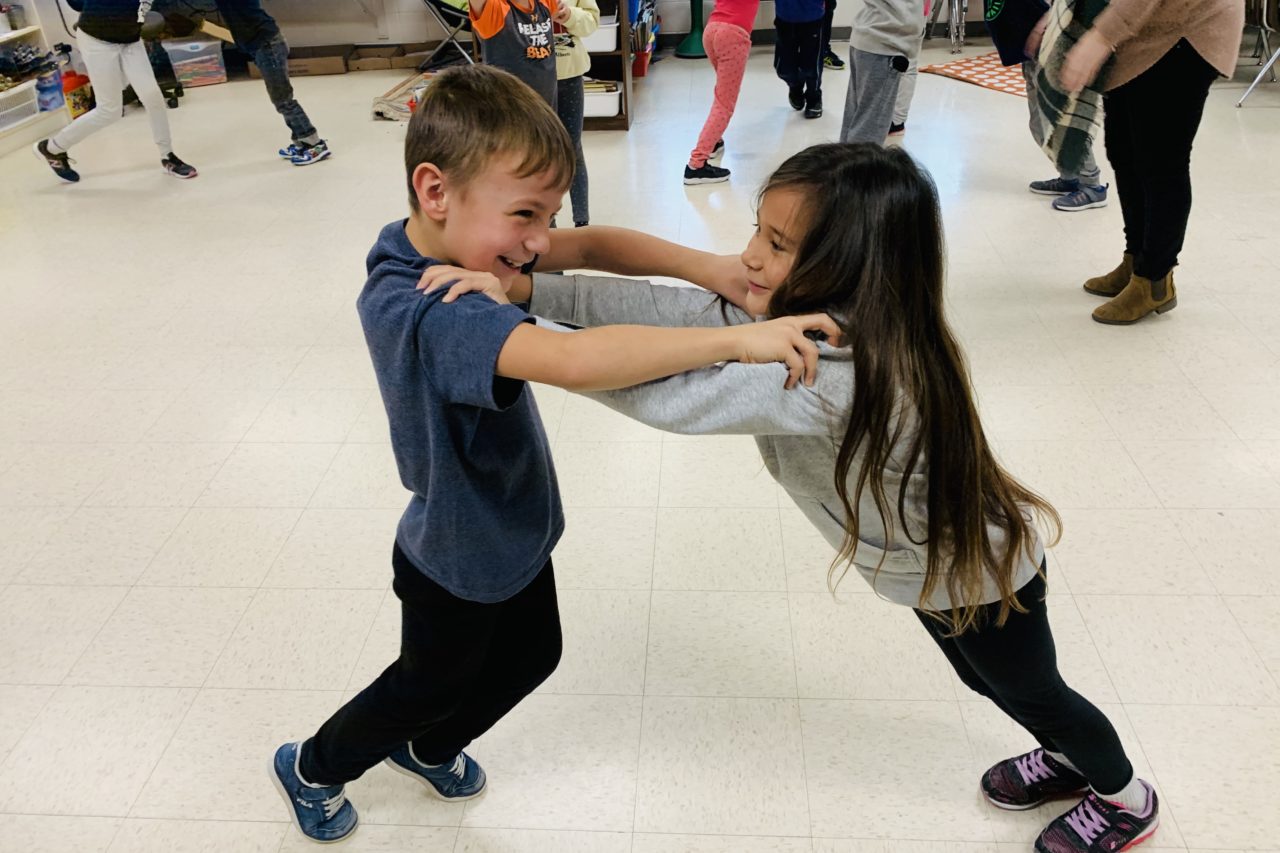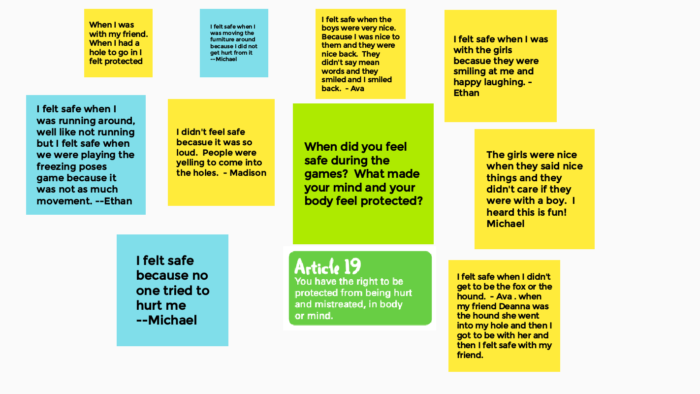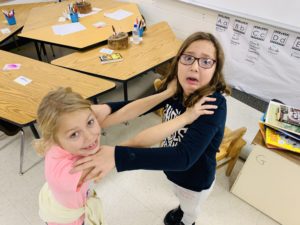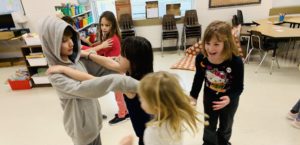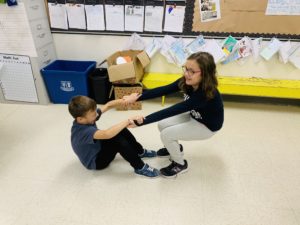Drama is magic with any class, any grade, maybe even any curriculum! I haven’t tried it in a math class … yet! I am a new convert to drama pedagogy. You might have classified me as a “hater” … maybe that’s a bit strong. I sure didn’t want to participate in drama anything! Too vulnerable. Too proper. Too many ways I was going to look stupid and fail. Too “fake.” Too “out of my league.” Too elitist.
And then I met Dr. Graham Lea and Brett Schmall. While I’m sure both of them can act, and I’m sure both of them produce spectacular stage performances, they have both introduced me to a different form of drama. Drama for non-actors. Drama for us regular people. Drama for people who hate drama. And all of a sudden, I find myself, a drama evangelist. It’s my go-to pedagogy for almost everything these days.
Let me tell you a little story …
In Elena Cornelsen’s grade three class, Elena and I have been exploring rights and responsibilities using drama pedagogy. We do a few drama exercises (games), and then we talk about the ways in which the game is a metaphor for big ideas like: rights, responsibilities, empathy, fairness, equality, equity, etc.
Today we did an exercise called: Balancing Pushing and Balancing Pulling.
Balancing Pushing:
“Take a partner-any partner will do. Stand facing each other and place your hands on each other’s shoulders, and push. Really push. Use your muscles. One of you is going to be stronger than the other. That’s life. The person who is less strong, push harder. The person who is stronger, push less hard. Don’t try to push each other over. This isn’t about winning or losing. The idea is to find the balance of strength between the two of you. Do this without speaking. Have the conversation with your bodies. You should always be moving. Don’t just lean against each other, push! Use different parts of your bodies. And again. And again” (Diamond, 2007).
Balancing Pulling:
“Facing each other, take each other by the wrists. Now lean out, taking each other’s weight, so that if one of you let go, the other would fall. Now, without talking, continuing to lean out, sit down. Bums to the floor. Now, pulling against each other, stand up. Repeat this a few times. Now in circles of four, then in circles of eight, and 16, etc.” (Diamond, 2007)
After each game we take the time to reflect in a stand-up circle. This is what happened today:
Teacher: What did you notice?
Ava: When I was partnered with Luis, it was a lot more fun. When I was Ethan’s partner, it was too hard and we kept falling.
Teacher: Why do you think that is?
Maddison: Luis and Ava are the same height. Ethan is much taller than Ava.
Teacher: How does that connect to rights and responsibilities?
(lots of quiet thinking ….)
Teacher: What do you notice about how things work and how we feel when things are equal?
Akram: We have more fun. Things go smoother. No one feels bad.
Teacher: Do you think our classroom is happier and feels safer when things are fair and equal? I wonder what we could do when things are unequal? How could we make things that are unequal or unfair, more equal or more fair?
This is one of many rich conversations that have come out of drama games in 3C. In this particular grade 3 class, we have talked about gender equality, refugees needing homes, policies that keep refugees out of countries, equity vs. equality, and the safety of our bodies and our minds …. all of these topics, using drama games! We have so much fun together, we build community and we learn using our bodies.
I wish I had time and space to tell stories about how this drama learning experience has drawn in students who haven’t been willing to participate in the group, how their willingness to speak about vulnerable topics has grown, how incredibly joyful their faces are, how they’ve expressed pride in themselves and each other for the ways in which they care for each other …
If you want a partner to try some of this out with or if you want resources, connect with Brett Schmall or myself and we will find some time to come and convert you. 😉
Try a game during your morning meeting. Try a game just before you start your 3-Act Math task. Try a game before a particularly challenging partner or group learning experience. Or try a few games! Then debrief about what you notice. How did the game help them understand who they want to be together, in a partnership or as a mathematician?
Here’s a resource with some ideas: Games for Actors and Non-Actors
Tip: Move all your furniture to the edges of the room; your carpet and everything. Trust me, if the kids do it, it takes 5 minutes to move it aside and 5 minutes to move it back! Totally worth the time.
Diamond, David. Theatre for Living: The Art and Science of Community-Based Dialogue . Trafford Publishing. Kindle Edition.
